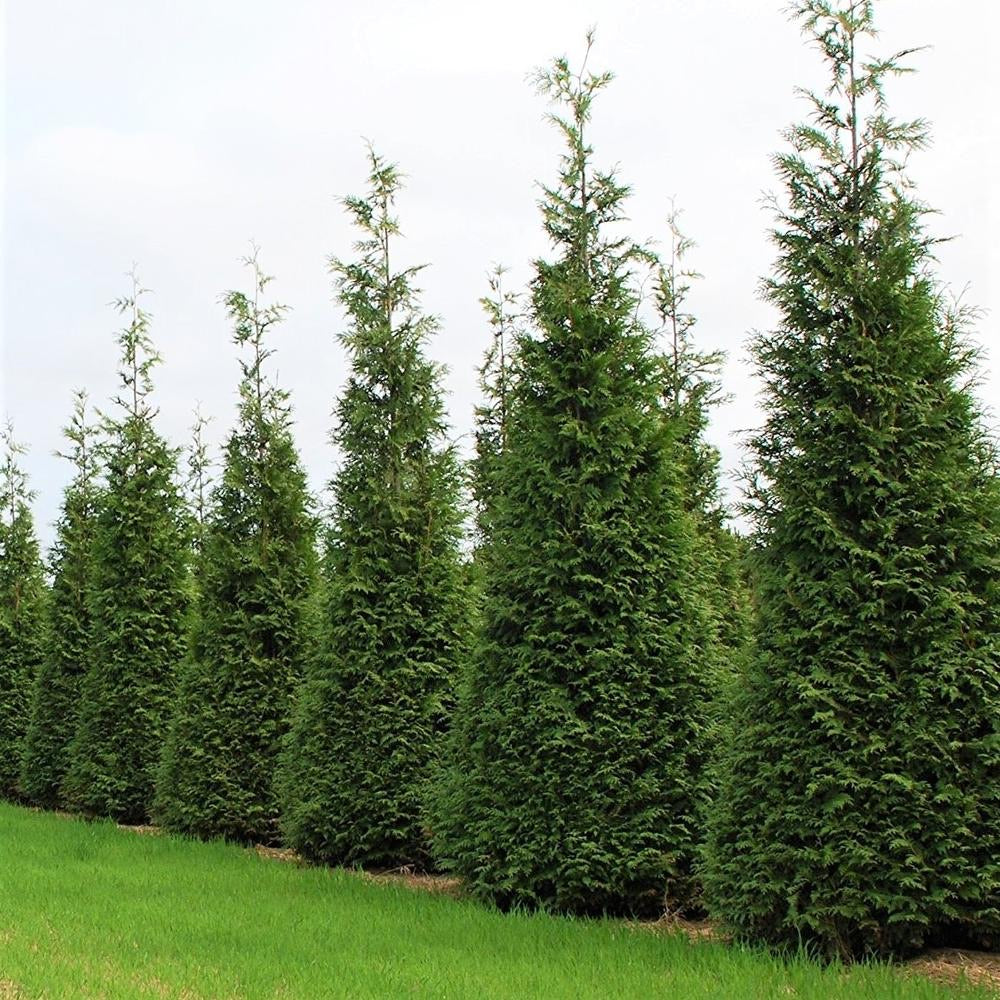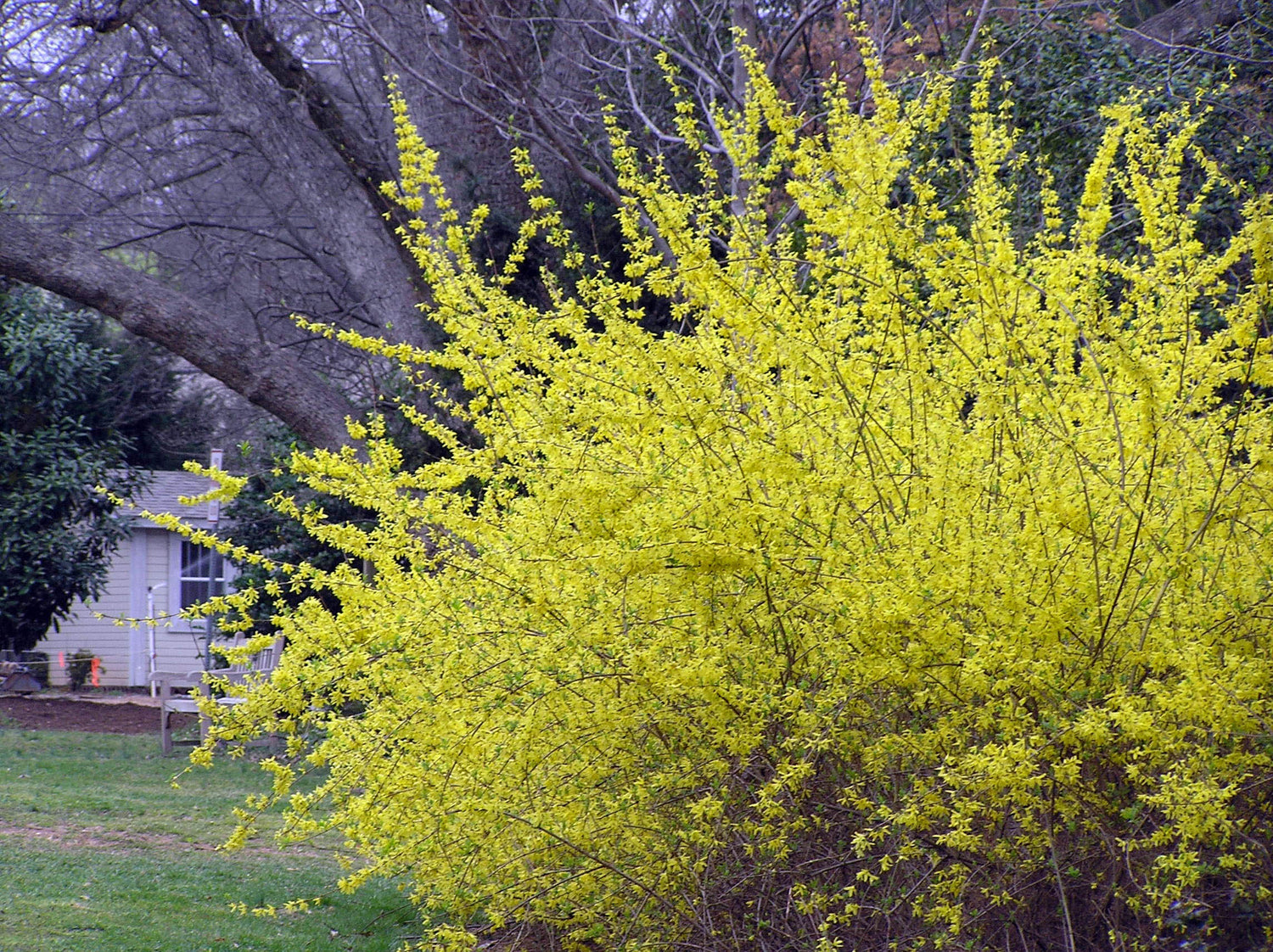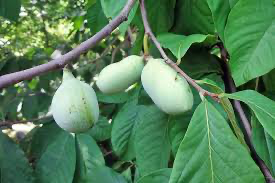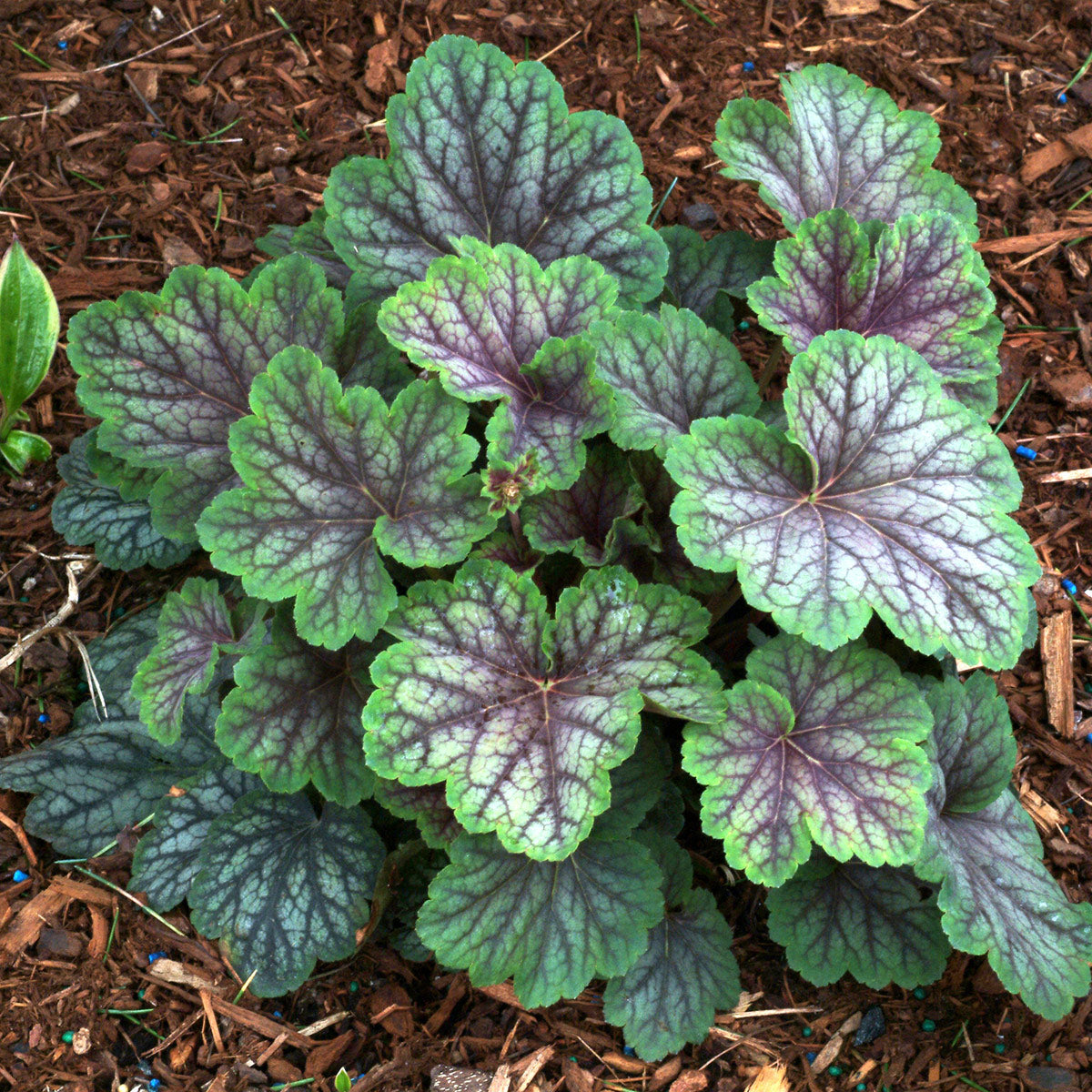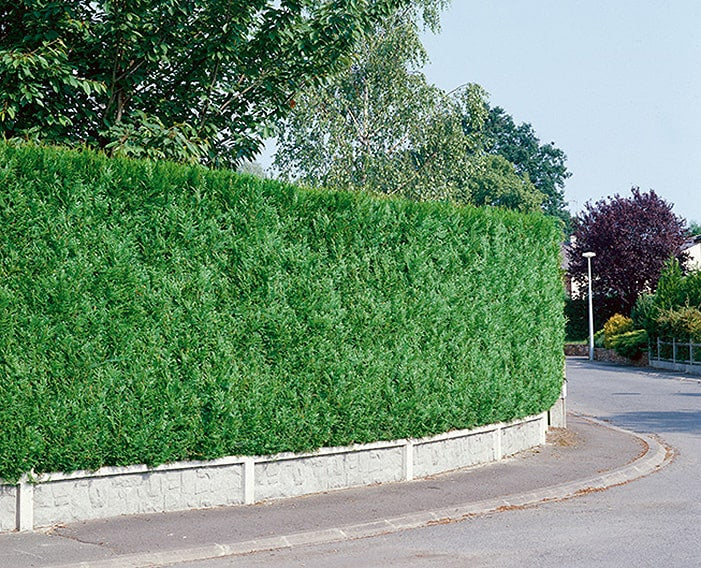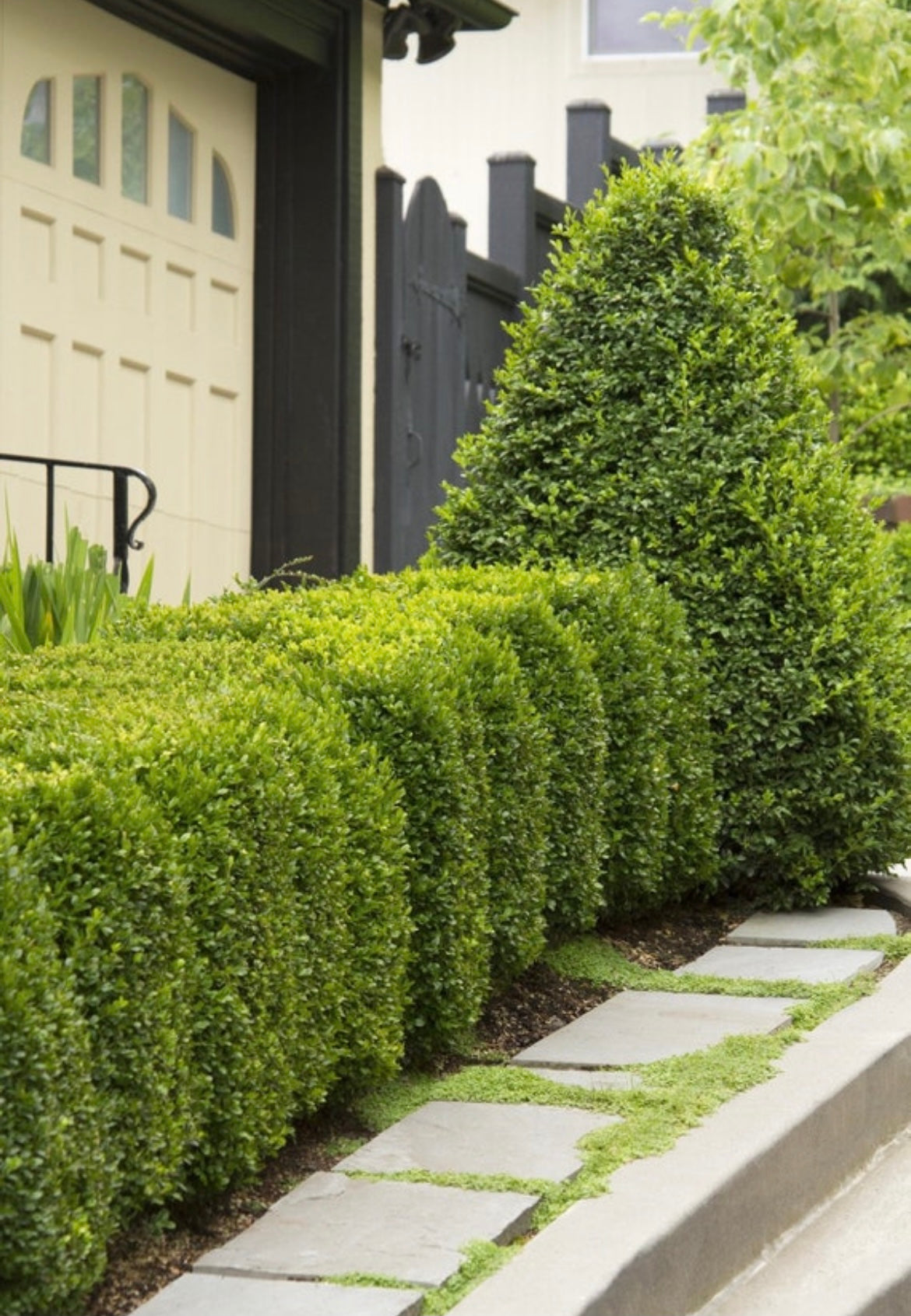Why Pruning is Essential for Grape Vines
If you’ve ever seen an overgrown grapevine, you know it can turn into a tangled mess pretty fast. What many people don’t realize is that grapevines need to be pruned every single year to stay productive. If left alone, the vines grow wild, producing lots of leaves but very few grapes—and the ones that do grow are often small and low-quality.
Pruning isn’t just about keeping your grapevines tidy—it’s about controlling growth, improving airflow, and boosting fruit production. When you remove old wood and unproductive canes, the vine can focus its energy on producing bigger, juicier grapes instead of wasting nutrients on unnecessary growth.
As a small family-owned nursery in Missouri, we’ve pruned our fair share of grapevines, and we can tell you firsthand: pruning makes all the difference in your harvest. If you’re just getting started, our Seedless Concord Grape Vines are an excellent choice for home growers—they’re hardy, easy to maintain, and produce delicious, sweet grapes year after year.

When is the Best Time to Prune Grape Vines?
Timing is everything when it comes to pruning grapevines. The best time to prune is in late winter or early spring—typically between February and March, depending on your location.
Why Late Winter?
- By this time, the vine is fully dormant, meaning it won’t “bleed” excessive sap when cut.
- It gives the plant time to heal before the active growing season starts in the spring.
- You can easily see the vine’s structure without all the leaves getting in the way.
If you prune too early in the winter, extreme cold can damage newly cut areas. On the other hand, if you wait too long into the spring, you might accidentally cut off new buds that are about to grow fruit.
For those in warmer climates, pruning can be done a little later in early spring since the vines wake up a bit sooner. If you’re growing grapes in colder northern states, aim for late February to early March before new buds start swelling.
Proper timing is also essential for other fruit trees, like columnar apple trees. If you’re interested in learning how to prune those, check out our step-by-step guide to pruning columnar apple trees.
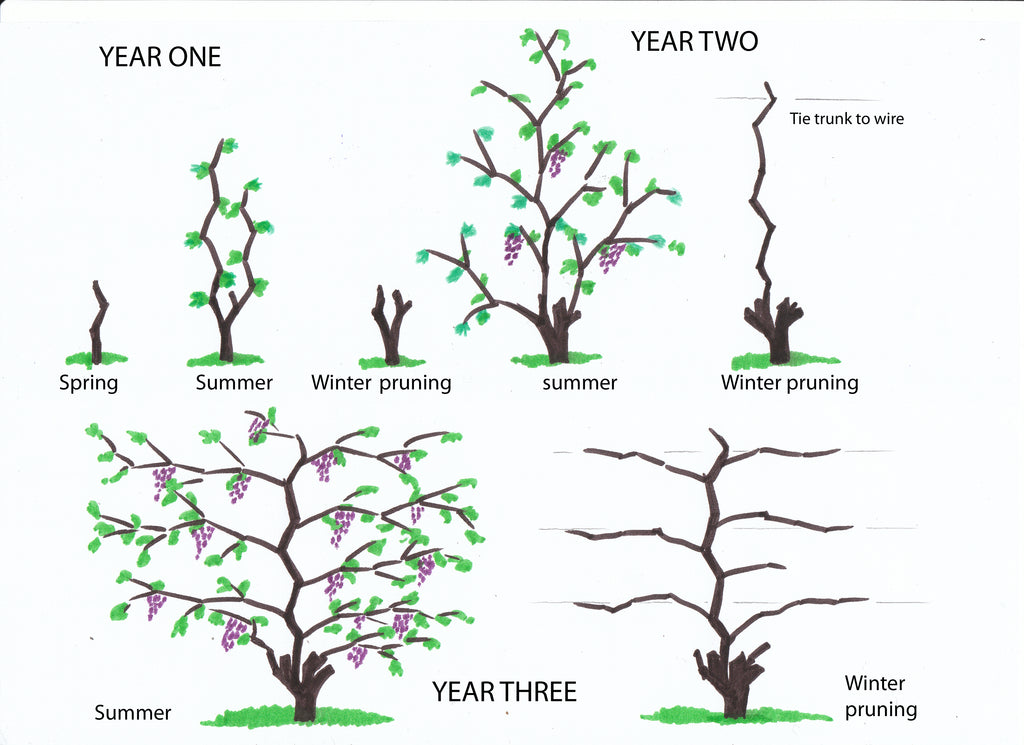
Cane Pruning vs. Spur Pruning: Which is Best?
There are two main methods for pruning grapevines: cane pruning and spur pruning. Choosing the right method depends on the type of grapevine you’re growing and how you want to manage its growth.
What is Cane Pruning?
Cane pruning is a method that involves removing most of the old wood each year and selecting a few strong canes to grow new fruiting shoots. This technique is often used for American and European grape varieties, including many table grapes and wine grapes.
Benefits of Cane Pruning:
✅ Produces larger grape clusters and higher-quality fruit.
✅ Best for vigorous grape varieties that need stronger renewal each year.
✅ Helps manage vines that have long growth habits.
Cane Pruning Steps:
- Identify one-year-old canes – These are the canes that grew last season and will produce fruit this year.
- Select 2-4 of the strongest canes from last year’s growth.
- Remove all other canes, keeping only the healthiest ones.
- Trim each selected cane to about 8-12 buds to encourage strong growth.
- Tie the chosen canes to a trellis or support system to direct new shoots properly.
Cane pruning requires a more aggressive approach, but it ensures stronger fruiting each season. This method is ideal for varieties that grow longer canes with fewer spurs.
What is Spur Pruning?
Spur pruning is a simpler method that involves cutting back short branches (spurs) each year, rather than removing entire canes. This method works well for compact grapevines, including seedless grape varieties like Concord grapes.
Benefits of Spur Pruning:
✅ Easier to manage for backyard gardeners.
✅ Works well for smaller grapevine structures, including trellised vines.
✅ Reduces the need for heavy pruning each year.
Spur Pruning Steps:
- Locate the short, thick spurs along the vine.
- Trim each spur down to 2-3 buds to control growth.
- Remove any dead or weak wood to maintain plant health.
- Keep the vine’s structure intact while allowing new shoots to develop from the remaining spurs.
Spur pruning is low-maintenance and perfect for small-space growers. If you’re looking for an easy-to-manage grape variety that thrives with spur pruning, our Seedless Concord Grape Vines are an excellent choice.
Which Method Should You Use?
- Choose Cane Pruning if you have long-growing grape varieties that require yearly renewal.
- Choose Spur Pruning if you want a low-maintenance approach for compact or seedless grapevines.
No matter which method you choose, proper pruning is the key to healthier vines and bigger harvests!
What Happens If You Don’t Prune Grape Vines?
Pruning grapevines might seem intimidating at first, but skipping it can cause big problems for your plant and your harvest. Many new growers think that more growth means more fruit, but the truth is, unpruned grapevines quickly become overgrown and unproductive.
Consequences of Not Pruning Your Grapevine
- Smaller, lower-quality grapes – The plant puts more energy into leaf production than fruit, leading to tiny, weak grape clusters.
- Too much shading – Overgrown vines block sunlight from reaching fruiting canes, slowing down ripening and reducing sugar content.
- Increased risk of disease – Poor airflow leads to higher humidity, making vines more susceptible to fungal infections like powdery mildew and black rot.
- More tangled, unmanageable vines – Grapevines will grow wild in all directions, making them harder to train and maintain year after year.
By pruning each year, you control the vine’s growth, improve fruit quality, and prevent diseases. It’s one of the easiest ways to make sure your grapevines stay productive for decades.
If you're growing Seedless Concord Grapes, pruning is especially important to keep them producing sweet, high-quality fruit. Learn more about why they're a favorite for home growers in The Sweetness of Homegrown Grapes.

Best Tools for Pruning Grape Vines
Having the right pruning tools makes the job easier and ensures clean, precise cuts that promote healthy regrowth.
Must-Have Tools for Grape Vine Pruning
- Bypass Pruning Shears – A high-quality hand pruner is a must for cutting canes cleanly without crushing them. We recommend the Gonicc 8" Professional Pruning Shears for sharp, smooth cuts every time.
- Loppers – For thicker, older canes that hand pruners can’t handle.
- Gloves – Protect your hands from sharp vines and sap.
- Trellis or Ties – Helps train the vines after pruning to keep them growing in the right direction.
How to Maintain Your Pruning Tools
- Clean your shears after each use to prevent spreading disease.
- Sharpen the blades regularly for clean cuts (dull blades can damage the vine).
- Oil moving parts to keep shears and loppers working smoothly.
Using sharp, clean tools not only makes pruning easier but also keeps your vines healthier by reducing stress on the plant.
For more information on training fruit plants for better production, check out our Step-by-Step Guide to Pruning Columnar Apple Trees.
Training Your Grape Vines for Maximum Yield
Pruning is just one piece of the puzzle—training your grapevines properly ensures that they grow in the right direction and produce the best possible fruit. Without training, grapevines will grow wildly in all directions, leading to tangled growth and reduced fruit production.
How to Train Your Grape Vines
-
Choose a Support System – Grape vines need structure. The best options are:
- Trellises – Ideal for home gardens, keeps vines off the ground.
- Wire Fencing – Helps guide the vine’s growth.
- Arbors & Pergolas – Great for decorative and edible landscaping.
-
Tie Young Vines to the Support – As new shoots develop, loosely tie them to the support structure to encourage upward growth.
-
Encourage Horizontal Growth – Direct the strongest canes along the trellis or fence to create a well-balanced framework.
-
Prune for Proper Spacing – Remove excess shoots to prevent overcrowding, allowing sunlight and airflow to reach the fruiting canes.
Why Training Your Vines Matters
✅ Prevents overcrowding and tangled growth.
✅ Improves sun exposure for better ripening.
✅ Enhances air circulation, reducing disease risks.
✅ Makes pruning and harvesting easier.
Properly trained vines not only look better but also produce larger, sweeter grapes. If you’re looking for easy-to-grow seedless grapes, check out Seedless Concord Grape Vines.
Common Mistakes to Avoid When Pruning Grape Vines
Pruning isn’t complicated, but a few common mistakes can make the difference between a productive grapevine and a struggling one.
1. Pruning Too Much or Too Little
- Too much pruning weakens the vine and reduces fruit production.
- Not pruning enough leads to excess leafy growth and fewer, lower-quality grapes.
- Solution: Stick to the cane pruning or spur pruning method based on your grape variety.
2. Pruning at the Wrong Time
- Pruning too early in winter can expose fresh cuts to frost damage.
- Pruning too late in spring can remove new buds, reducing your grape yield.
- Solution: Aim to prune in late winter to early spring, before bud break.
3. Leaving Too Many Canes
- Overcrowding blocks sunlight and increases the risk of diseases.
- Solution: Keep only the strongest canes and remove weak, unproductive growth.
4. Using Dull or Dirty Pruning Tools
- Dull shears crush stems instead of cutting cleanly, leading to plant stress.
- Dirty tools spread diseases between vines.
- Solution: Use sharp, clean pruning shears like the Gonicc 8" Professional Pruning Shears for precise cuts.
5. Neglecting Trellis or Vine Support
- Untrained vines grow chaotically, making future pruning harder.
- Solution: Regularly train vines along a trellis to keep growth under control.
Avoiding these mistakes makes pruning easier and ensures your grapevines stay healthy and productive for years to come.
The Key to Healthier, More Productive Grape Vines
Pruning grapevines may seem intimidating at first, but once you understand the timing, techniques, and benefits, it becomes second nature. Annual pruning is essential for ensuring your vines produce high-quality, abundant fruit instead of turning into an overgrown mess.
Key Takeaways for Pruning Grape Vines:
✅ Prune in late winter or early spring before new buds appear.
✅ Choose between cane pruning and spur pruning based on your grape variety.
✅ Train your vines on a trellis or support system for better fruit production.
✅ Use the right tools, like the Gonicc 8" Professional Pruning Shears, for clean, precise cuts.
✅ Don’t skip pruning! Overgrown vines lead to fewer, smaller grapes.
If you’re looking to grow your own grapes at home, we highly recommend starting with our Seedless Concord Grape Vines. They’re low-maintenance, high-yielding, and perfect for home gardeners.
Want to learn more about growing and caring for fruiting plants? Check out our blog post on The Sweetness of Homegrown Grapes for more insights into why growing your own grapes is worth it.
Happy pruning, and here’s to a fruitful harvest! 🍇







